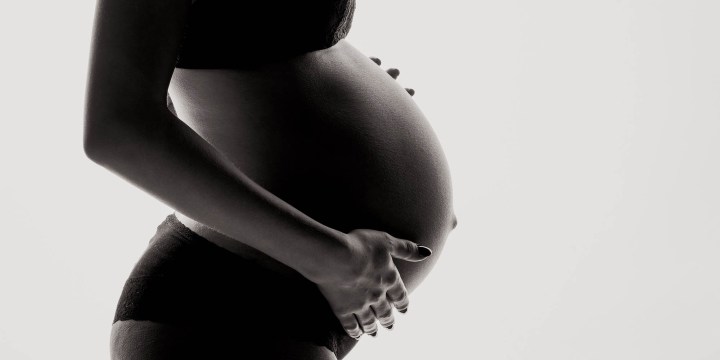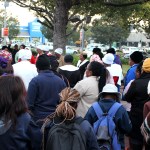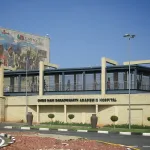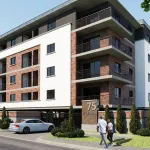OP-ED
Our bodies, our selves – towards reproductive justice in South Africa

We can now see an emboldened reproductive justice movement in South Africa that places the reproductive health and rights of women and girls within a social justice framework. But the work is far from over.
South Africa is committed to achieving the UN’s Sustainable Development Goals (SDGs). Availability of and access to safe abortion services are integral components of sexual and reproductive health (SRH) services that ensure fulfilment of reproductive justice and are indispensable to achieve the SDG promise of “leaving no one behind”.
Reproductive justice is the complete physical, mental, spiritual, political, economic, and social well-being of women and girls. For it to become a reality in South Africa, we need a transformation at the individual, community, and societal levels so that women and girls are able to not only survive but thrive, exercise control over their bodies, and have access to a full range of reproductive choices.
While the country has one of the most progressive abortion laws in the world, there are several barriers to its effective implementation. Stigma is one key barrier that is currently being addressed by all stakeholders including the government, civil society, and SRH experts and advocates. In the last few years, we have witnessed (and been a part of) a growing collaboration between key players – sexual and reproductive health and rights (SRHR) experts and organisations, media, healthcare providers and advocates – who have contributed to the growth of the SRHR discourse and supported the movement for reproductive justice. Such collaborations have also helped create an enabling policy environment for improved access to SRH services, including safe abortion services.
Since 2016, key organisations have been working towards the finalisation of the National Integrated Sexual and Reproductive Health and Rights Policy. According to the National Department of Health, the policy defines a package of services, which will benefit women throughout their reproductive life cycle.
In 2018, several SRHR organisations joined forces to launch #MyBodyMyChoice, a social and community media campaign, calling for protecting and promoting women’s rights to make decisions about their reproductive health, bodies and lives. This campaign was born out of a simple idea: if it is her body, it should be her choice. Overall, the campaign partners* believe that a woman’s ability to access the health services she needs, and make informed decisions related to her body, health and life — regardless of her sexuality, where she lives, her income level, or her ethnicity — is a fundamental right.
The campaign is supported by safe abortion advocates, such as Gaopalelwe Phalaetsile, who started the Abortion Support South Africa Facebook group, abortion providers such as Melusi Dlamini and Tshiamo Nakanyane, activists such as Khanyisa Booi, and other celebrities, artists and authors.
Last year, to spotlight the issue, community stakeholders organised South Africa’s first march on reproductive justice. This year, the campaign increased its efforts to combat abortion stigma and create safe spaces for women to share the experience around abortion. As a part of this, it organised a multimedia exhibition on abortion called Voices and Choices, which was curated by director Mmabatho Montsho and was held at the historic Women’s Jail at Constitution Hill. This exhibition ran for a month and featured abortion stories and experiences using the mediums of photography, graphics, art and videos.
However, much more work needs to be done as we are still a long way from full reproductive justice in our country. Supporting this movement around abortion rights and reproductive justice is important now more than ever – given the high unmet need for contraception, high number of unintended pregnancies (including teenage pregnancies), and illness and deaths related to complications resulting from illegal and unsafe abortions.
In the past months, as the campaign has grown, we have seen the silence being broken, people sharing their abortion stories and advocating for a woman’s right to choose.
We can see the tide turning and we all need to keep playing our part.
Various stakeholders, especially the government, need to continue strengthening the clinical and operational framework for the provision of equitable, accessible, cost-efficient and non-judgmental services, and ensure successful implementation of South Africa’s reproductive health policy.
We need to keep engaging and sensitising healthcare providers, especially nurses, so they understand the rights of women and young girls related to accessing family planning, contraception and abortion services.
As the government continues to shape and model the National Health Insurance plan and package of services, we need to ensure that SRH services are not left behind.
And finally, we need to keep the conversation around reproductive justice alive so that it can become a reality for all our women and young girls. DM
*Campaign partners include Amnesty International South Africa, Constitution Hill, Doctors Without Borders (MSF) South Africa, Gender Links, Global Health Strategies (GHS), Health-e News, Ibis Reproductive Health, Ipas, Marie Stopes South Africa, Nalane for Reproductive Justice, Section 27, Treatment Action Campaign (TAC), Sexual & Reproductive Justice Coalition (SRJC), Sonke Gender Justice and South African Human Rights Commission (SAHRC).
Shikha Nayyar is director and Dineo Moerane is programme associate at Global Health Strategies South Africa. GHS is currently working on a project that aims to enhance access to safe abortion services for women and adolescent girls by advocating for rights-based reproductive policies, breaking the silence and changing attitudes about abortion.


















